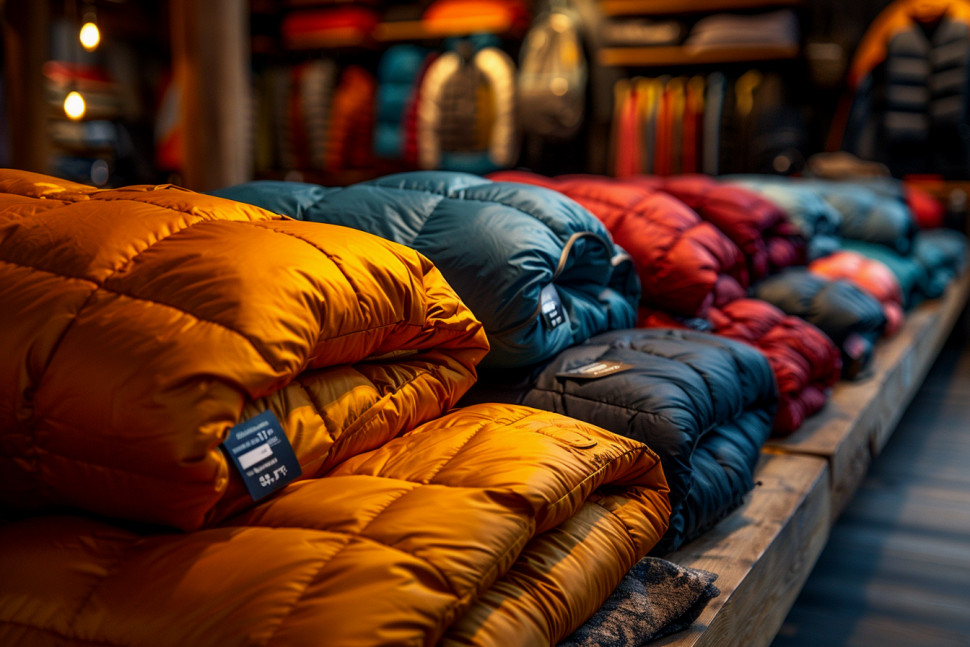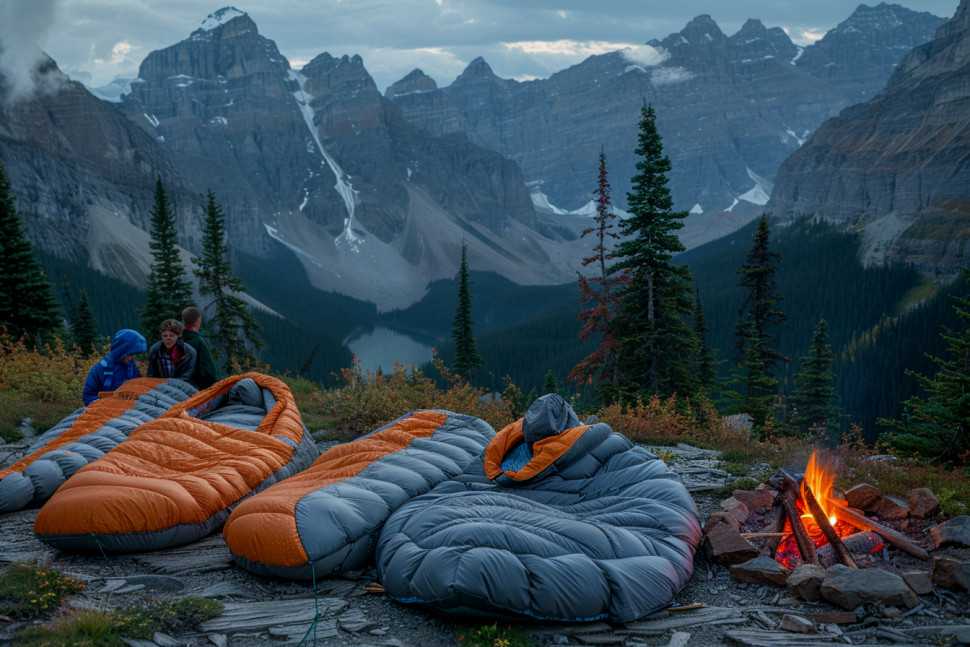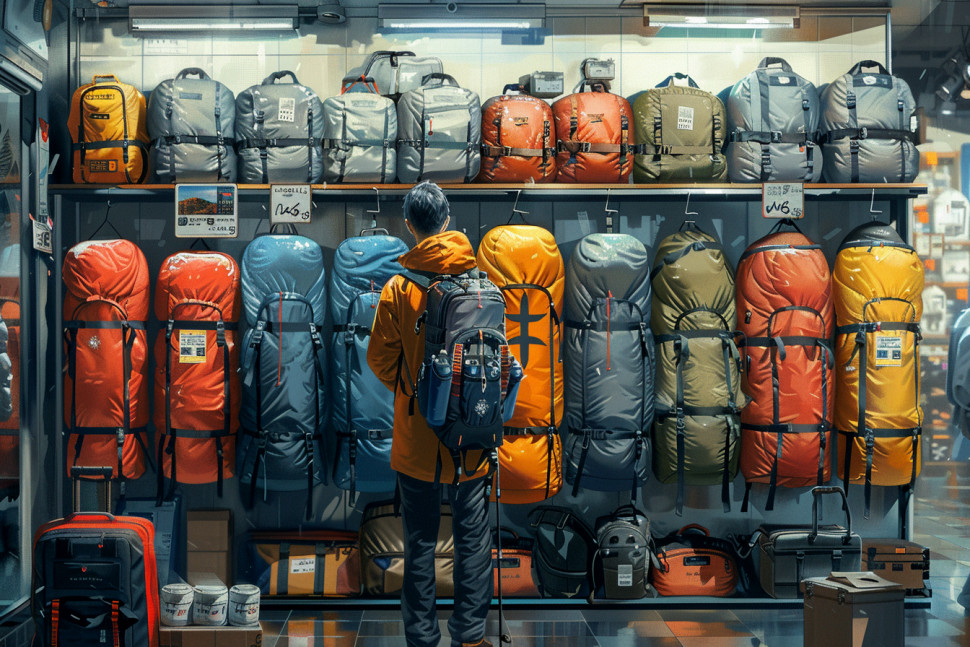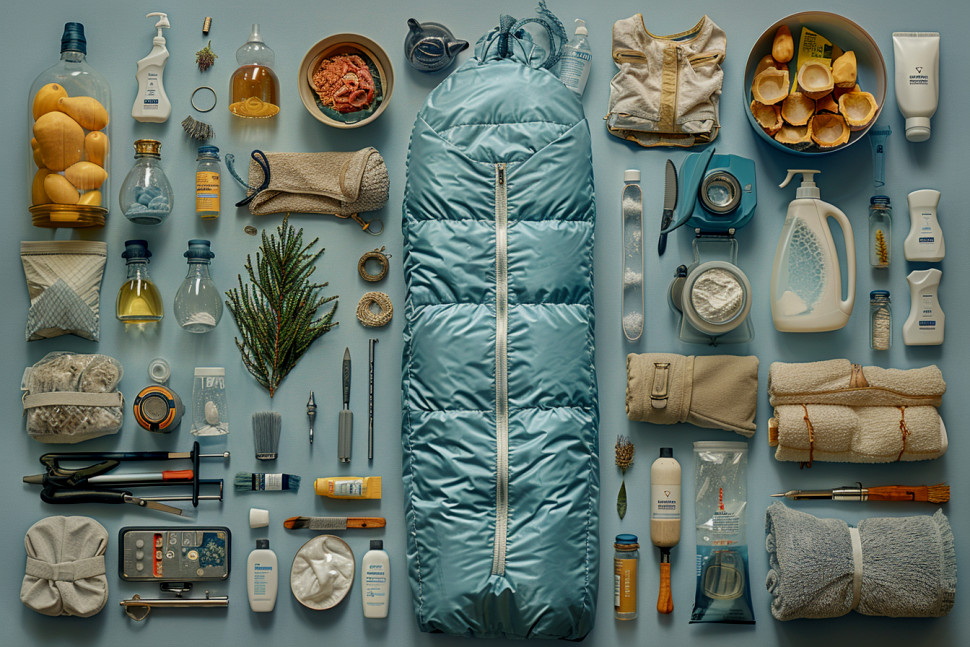Ultimate Guide to Sleeping Bags: How to Choose the Perfect One for Your Camping Trip

Key Takeaways
- Consider the temperature rating and choose a bag rated slightly lower than the coldest expected temperature for your trip
- Decide between down and synthetic insulation based on your priorities for warmth, weight, packability, and moisture resistance
- Pick a shape that balances thermal efficiency and comfort: mummy for colder temps, rectangular for more room, or semi-rectangular for a middle ground
- Make sure to get the right size bag for your height to maximize warmth and comfort
- Look for features like draft collars, full-length zippers, and sleeping pad compatibility to enhance your sleeping bag's performance
- Don't forget accessories like a stuff sack, storage sack, and liner to keep your bag clean and protected
Introduction: Why Choosing the Right Sleeping Bag Matters
Picture this: you're snuggled up in your tent after a long day of hiking, ready to drift off to sleep under the stars. But instead of being lulled into a peaceful slumber, you spend the night shivering, tossing and turning, unable to get comfortable. The culprit? A poorly-chosen sleeping bag that left you ill-equipped for the conditions.
Your sleeping bag is one of the most important pieces of gear you'll bring on any camping trip. It's your cocoon against the cold, your oasis of comfort in the wilderness. But with so many options out there – different shapes, insulation types, temperature ratings, and features – it can be overwhelming to figure out which one is right for you.
That's where this ultimate guide comes in. We'll break down all the key factors, to consider when choosing a sleeping bag so you can find the perfect one to keep you warm, cozy, and well-rested on all your camping adventures. Let's dive in!

Understanding Sleeping Bag Temperature Ratings
One of the first things to look at when choosing a sleeping bag is its temperature rating. This tells you the lowest temperature at which the bag is designed to keep the average person warm. But there's a little more to it than that.
Sleeping bag temperature ratings come from a standardized test called the EN (European Norm) 13537 test. This test uses a heated mannequin wearing long underwear and a hat, placed in the bag on a sleeping pad in a cold room. The results give you four numbers:
- Upper Limit: The highest temperature at which an average man can sleep without excessive perspiration.
- Comfort: The temperature at which an average woman can expect to sleep comfortably in a relaxed position.
- Lower Limit: The temperature at which an average man can sleep for eight hours in a curled position without waking.
- Extreme: The minimum temperature at which an average woman can remain for six hours without risk of death from hypothermia (but still with risk of frostbite). This is basically a survival rating, not a comfort rating.
In general, it's a good idea to choose a bag with a lower limit rating about 10-15°F lower than the coldest temperature you expect to encounter. And remember, these ratings are based on averages – some people sleep colder than others, so err on the side of a warmer bag if you tend to get chilly at night.
Down vs. Synthetic Insulation: Pros and Cons
The type of insulation in your sleeping bag will have a big impact on its warmth, weight, packability, and overall performance. The two main types of insulation are down and synthetic, each with their own pros and cons.
Down Insulation:
- Pros: High warmth-to-weight ratio, very compressible, long lifespan
- Cons: Loses insulating power when wet, slow to dry, more expensive, not vegan-friendly
Synthetic Insulation:
- Pros: Insulates even when wet, dries quickly, less expensive, vegan-friendly
- Cons: Heavier and bulkier than down, shorter lifespan
So which one should you choose? It depends on your priorities and the conditions you'll be camping in. If you're mostly camping in dry environments and want the lightest, most packable option, go with down. If you're on a budget or often camping in damp conditions, synthetic might be the way to go.

Choosing the Right Sleeping Bag Shape
Sleeping bags come in a few different shapes, each with their own balance of thermal efficiency and comfort. Here are the main types:
| Shape | Pros | Cons |
|---|---|---|
| Mummy | Most thermally efficient, lightest and most packable | Can feel restrictive, less room to move around |
| Rectangular | Most spacious and comfortable, can unzip to use as a blanket | Least thermally efficient, heaviest and bulkiest |
| Semi-rectangular (barrel) | Middle ground between mummy and rectangular | Compromise on both thermal efficiency and comfort |
Mummy bags are great for colder temperatures when you want maximum warmth and minimum weight. Rectangular bags are ideal for warmer weather and car camping when comfort is key. And semi-rectangular bags offer a happy medium for those who want a balance of the two.
Getting the Right Size Sleeping Bag
Sleeping bags usually come in two or three lengths: regular, long, and sometimes short. To figure out what size you need, measure your height and add a few inches to allow some wiggle room. Here are some general guidelines:
- Short: fits people up to 5'6"
- Regular: fits people up to 6'
- Long: fits people up to 6'6"
It's important to get a bag that's not too big or too small. If your bag is too big, you'll have extra space to heat up, which can make you colder. If it's too small, you'll compress the insulation and create cold spots. When in doubt, go with the size up for a little extra room.

Key Features to Look for in a Sleeping Bag
Beyond the basics of temperature rating, insulation type, shape, and size, there are a few key features that can make a big difference in your sleeping bag's performance and comfort. Here are some things to look for:
- Draft collar: A tube of insulation that wraps around your neck to prevent heat from escaping. This is especially important for colder-weather bags.
- Full-length zipper: Allows you to vent your feet on warmer nights and makes the bag easier to get in and out of. Look for a zipper with a draft tube to prevent cold spots.
- Sleeping pad compatibility: Some bags have sleeves or straps to attach to your sleeping pad, preventing you from rolling off in the night.
- Stash pockets: Handy for keeping small essentials like a headlamp or phone close at hand.
- Pillow pocket: A sleeve at the head of the bag where you can stuff clothes to create a pillow.
Sleeping Bag Accessories: Stuff Sacks, Storage Sacks, and Liners
In addition to the sleeping bag itself, there are a few key accessories to consider:
- Stuff sack: Used to compress your sleeping bag down to a smaller size for packing. Many bags come with a stuff sack included.
- Storage sack: A larger, breathable sack for storing your sleeping bag when not in use. Storing your bag compressed can damage the insulation over time, so it's important to keep it in a storage sack when not on the trail.
- Liner: A thin, removable layer that goes inside your sleeping bag. Liners can add a bit of extra warmth, but their main purpose is to keep your bag clean and extend its lifespan.

Caring for Your Sleeping Bag: Tips for Cleaning and Storage
To keep your sleeping bag performing at its best, it's important to clean and store it properly. Here are some tips:
- Always store your bag uncompressed in a large, breathable storage sack.
- Spot clean small stains with a damp cloth and mild soap. For bigger jobs, follow the manufacturer's instructions for washing.
- If your bag is down-filled, use a specialized down soap and dry it thoroughly on low heat with tennis balls to prevent clumping.
- Never store your bag compressed or in its stuff sack for long periods of time.
- If your bag gets wet on the trail, dry it out as soon as possible to prevent mildew and damage to the insulation.
Cooking in the Wild: Top Tips for Selecting the Ideal Camping Stove
When venturing into the wilderness, selecting the ideal camping stove is crucial for preparing hot meals efficiently. Portable camping stoves offer convenience and reliability, with options ranging from lightweight backpacking stoves to powerful multi-fuel models. Consider factors such as fuel type, size, and weight to ensure your camping stove suits your needs. Opt for a stove that balances performance with portability, making it easy to cook in various outdoor conditions. With the right camping stove, you can enjoy delicious meals while exploring the great outdoors.
Choosing the right camping gear
When it comes to choosing the right camping gear, it is essential to consider factors such as durability, weight, and functionality. A high-quality sleeping bag can make all the difference in ensuring a good night's sleep in the great outdoors. Selecting the best camping stove involves evaluating fuel type, cooking power, and portability. Additionally, investing in a reliable tent that can withstand various weather conditions is crucial for a comfortable camping experience. Proper research and comparison of different gear options will help you make informed decisions for your outdoor adventures.
Conclusion: Investing in a Good Night's Sleep
Choosing the right sleeping bag is a critical part of ensuring a comfortable and enjoyable camping trip. By considering factors like temperature rating, insulation type, shape, size, and features, you can find the perfect bag to keep you warm and cozy in any conditions.
Remember, a high-quality sleeping bag is an investment in your comfort and safety in the outdoors. Don't be tempted to skimp on quality to save a few bucks – you'll be glad you prioritized a good night's sleep when you're out on the trail.
With the right sleeping bag in your pack, you'll be ready to take on any camping adventure with confidence. Sweet dreams!
